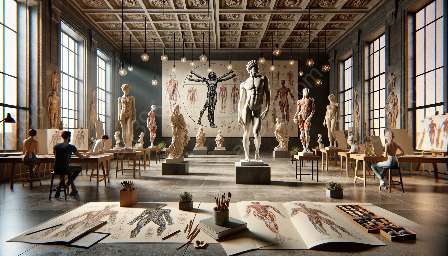Portraiture is an art form that captures the essence and depth of the human form. Understanding the anatomy, particularly the subcutaneous fat compartments, is crucial for creating depth and dimension in hyperrealistic and artistic portraits.
Anatomy for Hyperrealistic Portraiture
In the realm of hyperrealistic portraiture, accuracy in depicting human anatomy is paramount. The subcutaneous fat compartments play a significant role in capturing the details of the human face and creating a lifelike appearance.
The subcutaneous fat layers, comprising superficial and deep fat compartments, are responsible for the contours and volume of the face. Getting to grips with the distribution of fat within these layers is essential for accurately representing the human face in art.
Understanding Subcutaneous Fat Compartments
As an artist, understanding the subcutaneous fat compartments aids in creating three-dimensional representations of the face. The superficial fat compartments, which include the buccal, lateral, and perioral fat pads, contribute to the convexities and concavities of the face.
Furthermore, the deep fat compartments, such as the deep medial cheek fat and the deep lateral cheek fat, provide crucial support and structure to the overlying soft tissues. These structures not only affect the appearance of the face in resting positions but also during various facial expressions.
Artistic Anatomy
Artistic anatomy delves into the integration of anatomical knowledge with the artistic process. By comprehending the subcutaneous fat compartments, artists gain a thorough understanding of how light and shadow interact with the human face. This knowledge enhances the portrayal of depth and dimension in artistic portraiture.
Moreover, studying the subcutaneous fat compartments allows artists to grasp the subtleties of facial features and contours. This attention to detail breathes life into portraits, capturing the natural variance and uniqueness of each individual's facial structure.
Incorporating Subcutaneous Fat Compartments into Portraiture
Integrating the understanding of subcutaneous fat compartments into the artistic process allows for the creation of highly realistic and engaging portraits. The portrayal of subtle variations in fat distribution and its impact on facial structure adds depth and character to the artwork.
Moreover, artists can use their knowledge of subcutaneous fat compartments to convey a subject's age, emotional state, and individuality. By carefully rendering the effects of these fat compartments on the face, artists can tell compelling stories through their portraiture.
Conclusion
Exploring the subcutaneous fat compartments for depth and dimension in portraiture bridges the gap between anatomy and art. Understanding these anatomical structures not only enhances the technical accuracy of hyperrealistic portraits but also infuses artistic portraiture with a profound level of realism and emotion.

